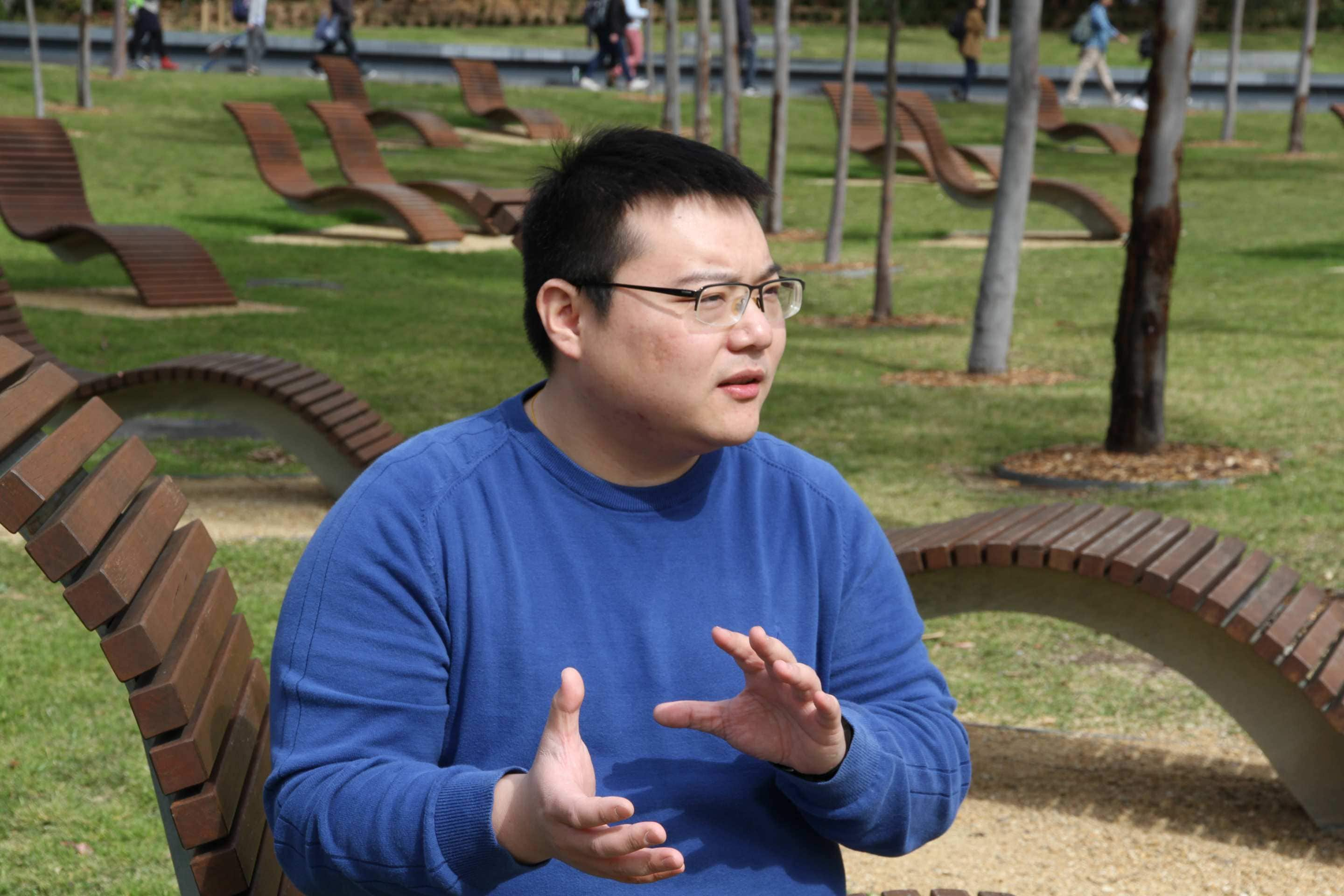Superman dreams come true
Xiaopeng Wang, PhD research candidate at the University of Sydney’s School of Electrical and Information Engineering is close to realising his dream of being like Superman, having X-ray vision and saving peoples’ lives.

Wang’s super hero dreams led him to the telecommunication research group at the University where he is part of a team developing a device with capabilities to see through the walls of collapsed buildings or piles of rubble.
The 25-year-old who grew up in a village outside Beijing overlooking the Great Wall of China says:
“I suppose I have had a little bit of heroism in me since I was a kid. I wanted to be Superman, with super powers to protect the innocent, fight against crime and save lives.”
I envied Superman’s X-ray eyes the most! I thought his ability to see through walls would have great value in the real world
After successful trials of a large scale version of the team’s device, Wang is now working on a smaller model of his prototype.
“To achieve the ‘x-ray vision’, we used Electromagnetic (EM) waves, which are the same thing that give us the radio and Wi-Fi. Some kinds of the EM waves can go through a wall and send back the information relating to the object hidden behind it,” said Wang.
“We can then process the waves to retrieve the information we want. We then reshape the wave so people can tell the shape of the object it has captured.”
Dr Zihuai Lin, Wang’s PhD supervisors says his device has the potential to be used broadly in natural disasters, emergencies, such as the recent Tianjin Tanggu explosion and the Nepalese earthquake.
“When people get buried under collapsed buildings, a device such as this one could pinpoint the precise location of the survivor and definitely speed up the rescue mission,” says Dr Lin.
Before he embarked on his research journey, Wang was a devotee of video gaming. He admits to spending hours and hours playing games such as War of Warcraft, Counter Strike or Call of Duty. His immersive gaming experience also gave him some inspirational ideas for his research.
“In those virtual reality games, you use a gadget to probe inside architectural structures or buildings, either to win a fierce battle or rescue a teammate,” he says. “I thought this is what I want to achieve in reality.”
However Wang has had a much greater sense of satisfaction achieving his research goals than accomplishing his gaming tasks. “This is reality,” he says.
Related articles
Resetting the table to halt expanding waistlines
Can farmers, producers and regulators work together at all points of the food supply chain to help curb Australia’s growing obesity problem?

Eureka Prize for Associate Professor Michael J. Biercuk
Associate Professor Biercuk was recognised with the prestigious prize for contributions at the leading edge of quantum science research.
Scientists should take a leaf out of wellness bloggers' books
How can we distinguish credible wellness information from unfounded pseudoscience? And why is it that wellness gurus are often taken more seriously than scientists? Jackie Randles writes.
18 of our most exciting scientists on Twitter
It's National Science Week this week from 15-23 August and for all you science lovers, we have created a list of the University of Sydney's most exciting scientists on Twitter.
How Einstein could help unlock the mysteries of space travel
Warp drives might be the stuff of science fiction, but they could be a step closer to reality if we look to Einstein's theory of gravity, according to a University of Sydney researcher.
Proof is in the breakfast cereal
The science of snap, crackle and pop has expanded beyond the breakfast bowl with an international research team using puffed rice cereal to explain the movement and crushing of porous materials when compressed.
University of Sydney celebrates Sydney Science Festival
From Einstein's theory of gravity to Aboriginal astronomical knowledge, University of Sydney researchers are proving there's no single formula for exploring a love of science this National Science Week.
How mobile phones could save us from obesity
A world-first intervention designed by Charles Perkins Centre researchers specifically for young people found mobile phones could improve health and halt weight gain.
Starchy carbs, not a Paleo diet, advanced the human race
Starchy carbohydrates were a major factor in the evolution of the human brain, according to a new study co-authored by researchers from the University of Sydney's Charles Perkins Centre and Faculty of Agriculture and Environment.
Big data maps world's ocean floor
Scientists from the University of Sydney's School of Geosciences have led the creation of the world's first digital map of the seafloor's geology.